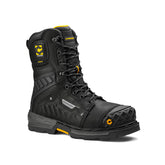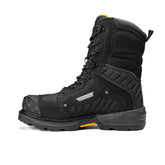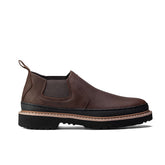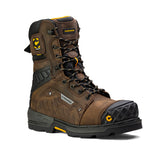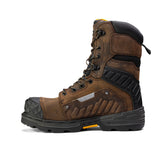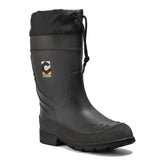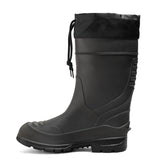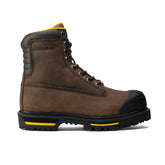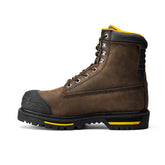What Does “Goodyear Welt Construction” Mean?
You might’ve seen it on a product tag. Maybe someone at the hardware store mentioned it in passing—“solid boot, Goodyear welted.” Sounds official, maybe even a little old-school. But unless you’ve gone deep into boot construction (no shame if you haven’t), it’s probably not obvious what that actually means.
Let’s fix that. Because if you rely on your boots the way most of our customers do—on concrete, on rooftops, in machine yards—understanding how they’re built matters more than you'd think.
The Basics: What’s a Goodyear Welt?
The Goodyear welt is a time-tested method of boot construction. It’s not a brand or a gimmick but a process.
Here’s how it works: a strip of leather (the welt) is stitched to both the upper part of the boot and the insole. That’s the first stitch. Then, a second stitch attaches the outsole to the welt. That creates a sort of mechanical sandwich—strong, flexible, and incredibly resilient.
Unlike cheaper boots that are simply glued together, Goodyear welted boots are built for longevity. And yes, it takes longer to make them. But that extra effort pays off in spades when you're 10 months into wearing them and your boots still have their spine.
Why It’s a Big Deal on the Job
Let’s be real—boots aren’t a fashion statement for many of us. They’re equipment. Gear you depend on to get you through the workday, rain or shine. If they fall apart, you feel it. Sometimes in your back, sometimes in your paycheck.
That’s where Goodyear welt construction really shines. It offers:
-
Durability: The layered stitching holds up under stress that would shred glued-on soles.
-
Water resistance: That extra space between upper and sole? It helps keep moisture from sneaking in.
-
Structure: Welted boots often feel firmer and more supportive—especially important when you're hauling, climbing, or standing for hours.
In short, they’re built to take a good deal of abuse.
Bonus: You Can Resole Them
This part gets overlooked, but it’s a game changer. Goodyear welted boots can be resoled without damaging the upper.
Say you wear through the tread after a year or two of heavy use. Instead of buying a whole new pair, you can just get the sole replaced. That extends the life of the boot and saves you cash long-term.
It’s sustainable and smart.
Breaking Them In: A Rite of Passage
Now, let’s not sugarcoat it. Goodyear welted boots don’t always feel like clouds out of the box. That structure that makes them durable? It may feel stiff at first.
But stick with them. As the leather warms up and the insole compresses, the boots start to mold to your foot. The shape adapts to your stride, your pressure points, your rhythm.
Chinook Footwear’s Approach
At Chinook, we don’t throw around terms like “Goodyear welt” for marketing flash. We use it because it works. Several of our heavy-duty models are welted the traditional way, stitched with purpose and built to hold up in rough environments.
We know our customers aren’t strolling down catwalks—they’re carrying drywall, running cables, digging trenches. And those jobs don’t wait for a boot to break down.
With Goodyear welted construction, we build boots that match the pace—and the punishment—of your work.
How to Spot a Goodyear Welt Boot
If you’re shopping and want to know if a boot’s built this way, flip it over and look at the edge. See stitching running along the perimeter of the outsole? That’s your tell. It’s not decorative—it’s functional.
Also, feel the boot. It should have some weight. It’s not heavy just for the sake of it—it’s solid, built with layers that hold together under pressure.
It’s in the Stitching
You don’t have to know every detail about boot construction. But if you want footwear that lasts—really lasts—then Goodyear welt construction is worth remembering.
It’s not a flashy detail, but it works. Just like a good pair of hands or a well-worn toolbelt.
At Chinook Footwear, we keep using it for one reason: it holds up. And when your boots don’t let you down, you can focus on the work that really matters.

